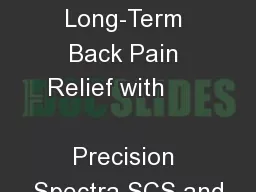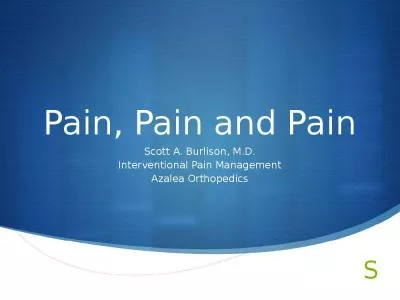PPT-Pain relief in labor 4th year 2022-2023
Author : cadie | Published Date : 2023-07-07
اداسراء حميد المعيني Principles of Pain Relief Labor pain caused by uterine contractions and cervical dilation is transmitted through visceral
Presentation Embed Code
Download Presentation
Download Presentation The PPT/PDF document "Pain relief in labor 4th year 2022-2023" is the property of its rightful owner. Permission is granted to download and print the materials on this website for personal, non-commercial use only, and to display it on your personal computer provided you do not modify the materials and that you retain all copyright notices contained in the materials. By downloading content from our website, you accept the terms of this agreement.
Pain relief in labor 4th year 2022-2023: Transcript
Download Rules Of Document
"Pain relief in labor 4th year 2022-2023"The content belongs to its owner. You may download and print it for personal use, without modification, and keep all copyright notices. By downloading, you agree to these terms.
Related Documents














